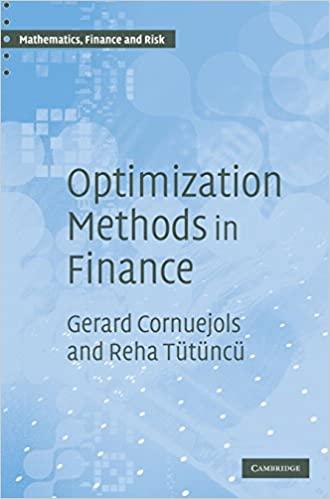Question
Question 3: You are planning to buy a new home. The house costs $300,000, but you only have $25,000 in savings that you can use
Question 3: You are planning to buy a new home. The house costs $300,000,
but you only have $25,000 in savings that you can use as down-payment. The
remainder needs to be financed by a mortgage. Your bank offers a 25-year loan,
with fixed annual interest at 7.5, and fixed monthly payments.
1. What are the monthly payments that you have to make for the entire
mortgage to be paid off in 25 years?
2. If you can afford to pay at maximum $2,000 per month, can you afford
the house? If not, how much additional down-payment would it be
required?
3. Now suppose you pay $2,400 per month instead. Can you pay off the
mortgage in 20 years without having to increase your down-payment?
4. The bank also offers an interest-only mortgage, again at 7.5% fixed
annual interest. If you go for this solution, you would have to make fixed
monthly payments, part of which go to the mortgage lender as interest,
while whatever is left would be deposited in a fund that earns interest at
rate R, compounded monthly.
Assume that you maintain the $25,000 down-payment. Consider different
scenarios: monthly payments of $2,000 or $2,400, and length of 20 or 25
years for the loan. For each combination (there are 4), work out the
minimum rate of return R that you must earn on your deposits so that
you will be able to pay off the debt at the end of the contracts lifetime.
Show all of your work. No Excel!
Step by Step Solution
There are 3 Steps involved in it
Step: 1

Get Instant Access to Expert-Tailored Solutions
See step-by-step solutions with expert insights and AI powered tools for academic success
Step: 2

Step: 3

Ace Your Homework with AI
Get the answers you need in no time with our AI-driven, step-by-step assistance
Get Started


